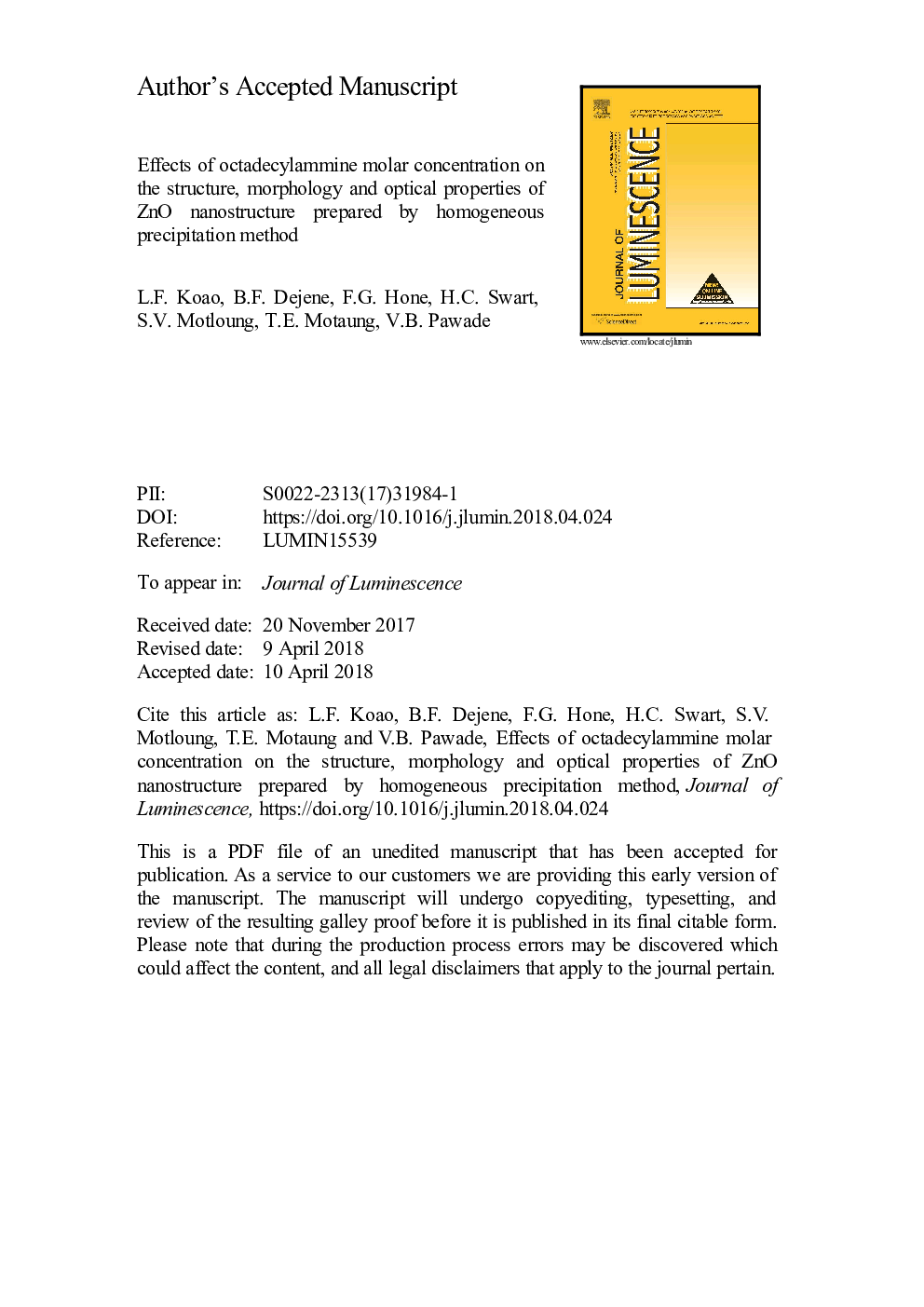| Article ID | Journal | Published Year | Pages | File Type |
|---|---|---|---|---|
| 7840002 | Journal of Luminescence | 2018 | 38 Pages |
Abstract
Pristine and octadecylammine (ODA)-capped ZnO nanostructures were synthesized via the homogeneous precipitation method at a bath temperature of 80â¯Â°C and annealed in air at 700â¯Â°C for 2â¯h. Various molar concentrations of ODA ranging from 0.3 to 15â¯mol% ODA were used to study the effect of ODA capping into ZnO nanostructures. The x-ray diffraction (XRD) analyses revealed the hexagonal wurtzite structure for all prepared samples. The estimated average crystallite sizes were found to be in the range of 46-72â¯nm. It was found that the crystallite sizes increased with an increase in the amount of ODA molar concentration. The surface morphology studied using scanning electron microscopy (SEM) showed flower-like shapes for pristine ZnO and cylindrical nanorods features for ODA-capped ZnO nanostructures. Elemental energy dispersive (EDS) and mapping analysis conducted on the samples shows homogeneous distribution of Zn, O, and C ions. The Ultraviolet-visible diffusion reflectance spectroscopy showed a decrease in the band gap with an increasing of ODA molar concentration. The photoluminescence (PL) results demonstrated that the luminescence intensity increased up to 10â¯mol% ODA. However, further increase in ODA molar concentration revealed the decrease on the luminescence intensity. The approach in the present study opened a new way to tune band gap and luminescence intensity using ODA.
Keywords
Related Topics
Physical Sciences and Engineering
Chemistry
Physical and Theoretical Chemistry
Authors
L.F. Koao, B.F. Dejene, F.G. Hone, H.C. Swart, S.V. Motloung, T.E. Motaung, V.B. Pawade,
